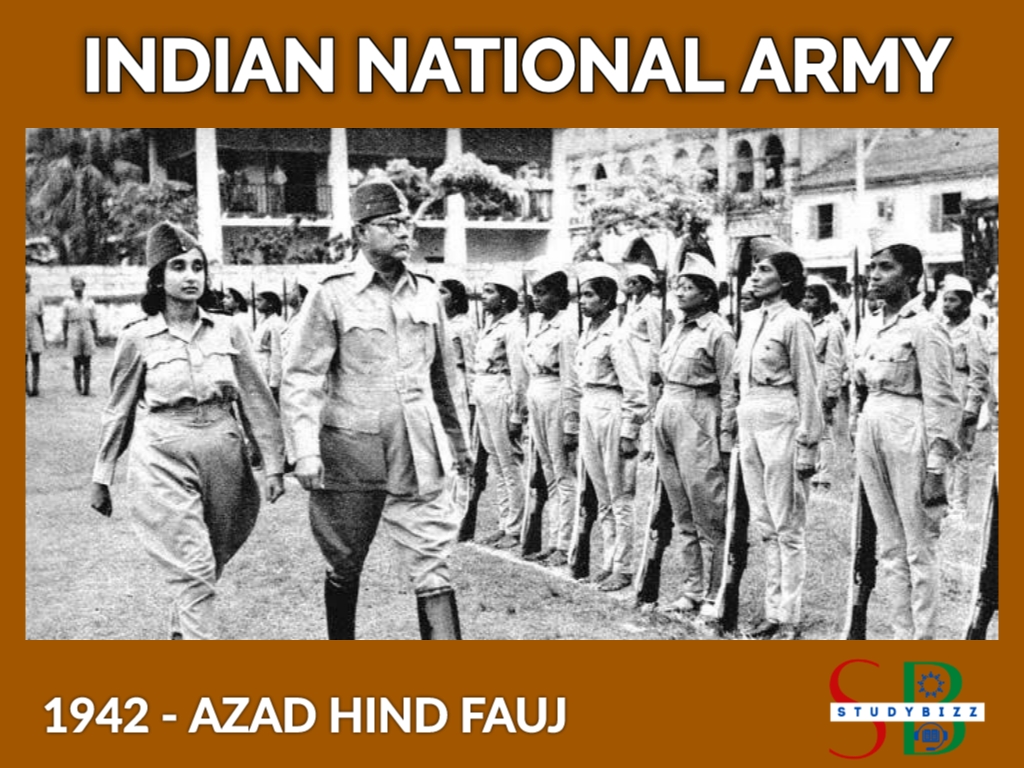History of Indian National Army (Founded in 1942)
The Indian National Army (INA – Azad Hind Fauj) was a military force formed during World War II to fight for Indian independence from British rule. It was established in 1942, in response to the British suppression of the Indian independence movement and the disillusionment of Indians with the British government’s policies. The INA was the first military organization that aimed to bring about Indian independence through armed struggle.
The INA was founded by Indian nationalist and former Indian National Congress leader Subhas Chandra Bose, who believed that India’s independence could only be achieved through armed struggle. Bose, who was known for his militancy and charismatic leadership, traveled to Southeast Asia to seek the support of the Japanese Empire in his quest for Indian independence. He formed the INA in 1942 with the support of the Japanese government and the Indian expatriate community in Southeast Asia.
The INA was initially comprised of Indian prisoners of war and expatriates who had been captured by the Japanese in Southeast Asia. However, it soon expanded to include thousands of Indians from various backgrounds, including soldiers, students, and civilians. The INA was organized into several units, including the infantry, artillery, and air force, and it fought alongside the Japanese army in several battles in Burma and India.
The INA’s most famous and successful campaign was the Imphal-Kohima campaign, in which it attempted to capture the Indian cities of Imphal and Kohima in March 1944. Although the campaign was ultimately unsuccessful, it demonstrated the INA’s commitment to Indian independence and inspired widespread support among Indians.
The INA’s efforts to bring about Indian independence through armed struggle had a profound impact on the independence movement in India. The INA’s efforts to challenge British rule and its sacrifice for the cause of Indian independence inspired widespread support among Indians and led to increased public pressure on the British government to grant India its independence.
In addition, the INA’s actions led to the British government’s decision to try three of its senior leaders, including Bose, for treason. The trials, which took place in 1945, generated widespread public sympathy for the INA and the independence movement, and led to increased political mobilization among Indians.
Following India’s independence in 1947, the INA was disbanded. However, the legacy of the INA continued to inspire generations of Indians and played an important role in the country’s independence movement. The INA’s efforts to bring about Indian independence through armed struggle demonstrated the lengths to which Indians were willing to go to achieve their goal, and its legacy continues to inspire Indian nationalism and pride.
In conclusion, the Indian National Army was a significant political and military organization that aimed to bring about Indian independence through armed struggle. It was founded by Subhas Chandra Bose and was the first military organization that aimed to challenge British rule in India. The INA’s efforts to bring about Indian independence through armed struggle inspired widespread support among Indians and led to increased public pressure on the British government to grant India its independence. The INA’s legacy continues to inspire Indian nationalism and pride and its actions had a profound impact on the independence movement in India.





Leave a Reply